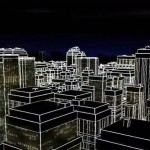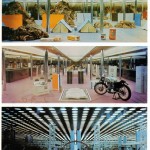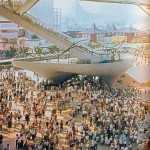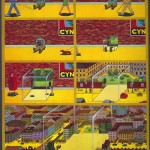“Get up, take a pill, kiss the baby, go to work, punch in, punch out, go home, kiss the baby, go to sleep.” (from)
The cyclical story of Soft City, artist Pushwagner‘s 1970’s graphic novel and magnum opus, is rooted in classic dystopian sci-fi. Although echoing Fritz Lang’s Metropolis, the social polarization of Blade Runner and the imagery of Hilberseimer’s Großstadt, the true source of Terje Brofos (the original name of 1940-born Norwegian artist) was the dystopian visions of novelist Axel Jensen, whose books he contributed illustrations.
Life in Soft City follows some simple rules: everyone’s happy, everyone drives, everything is regulated by the same rhythm (you’re late, you’re fired), the same routine and the same lifestyle. The innerscape is as much a prison as the outerscape. Such a technocratic society is regulated by the figure of “The Boss”, a bureaucrat who sits behind a massive desk of levers and switches and controls the world via a giant screen.
Much more than the themes, which appear a little clichéd, and the critique of power and greed, a bit naïve at its best, what intrigues us is the artist’s obsessive creation of an hyper-detailed world of factories, military death camps, square-shaped-windows-uniform architectures, and a general disenchanting view of modern life in the city through pop-art symbolism and Magrittian surrealism.
Discovered after years of oblivion, Soft City was one of the standout works in the 2008 Berlin Biennale, while a Norwegian film (trailer here) released in 2011 documented the artist’s turbulent life.
























All images © Pushwagner
Further reading:
More Pushwagner drawings on Ed Janses Flickr set
I Can’t Help It; I’ve Got a Military-Industrial Complex, by Karen Green
Pushwagner: Soft City, an Exhibition on MK Gallery + Exhibition guide + Flickr set





Leave a Reply